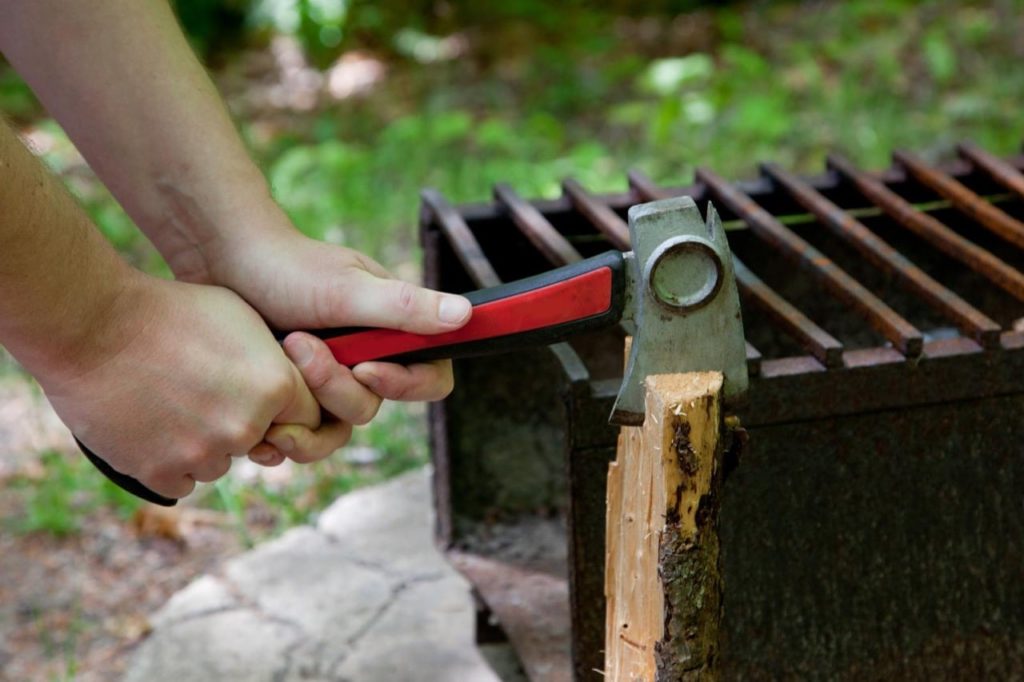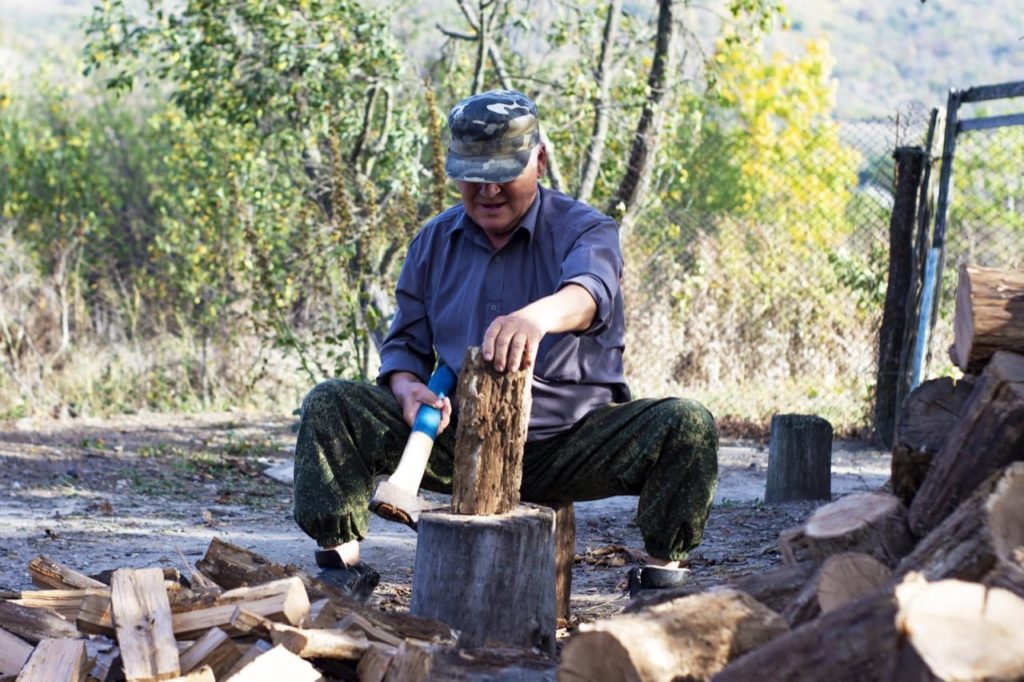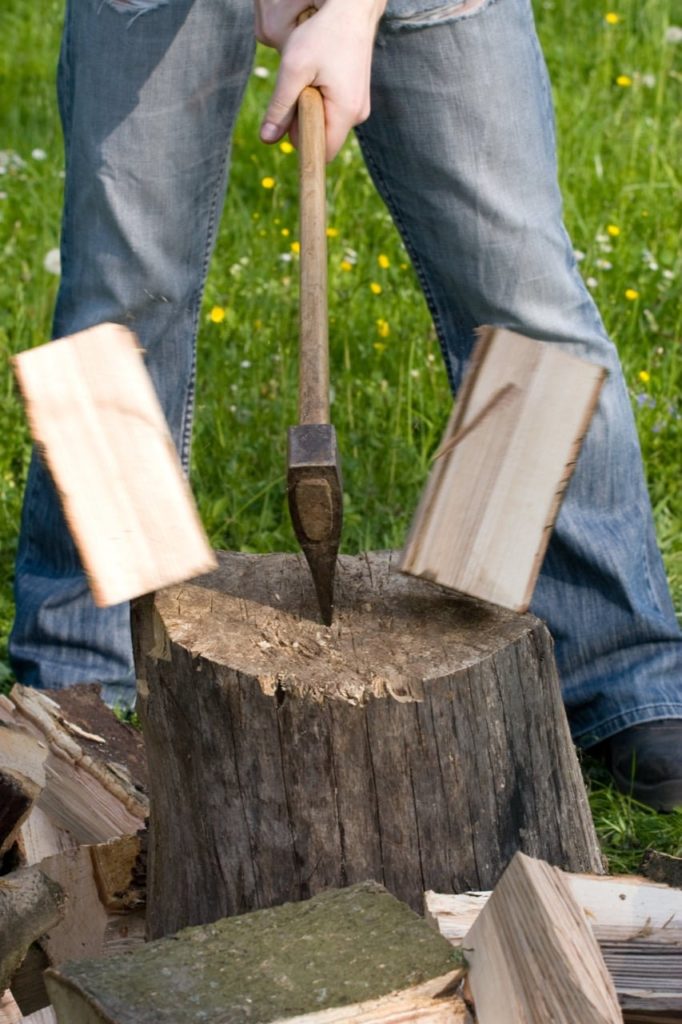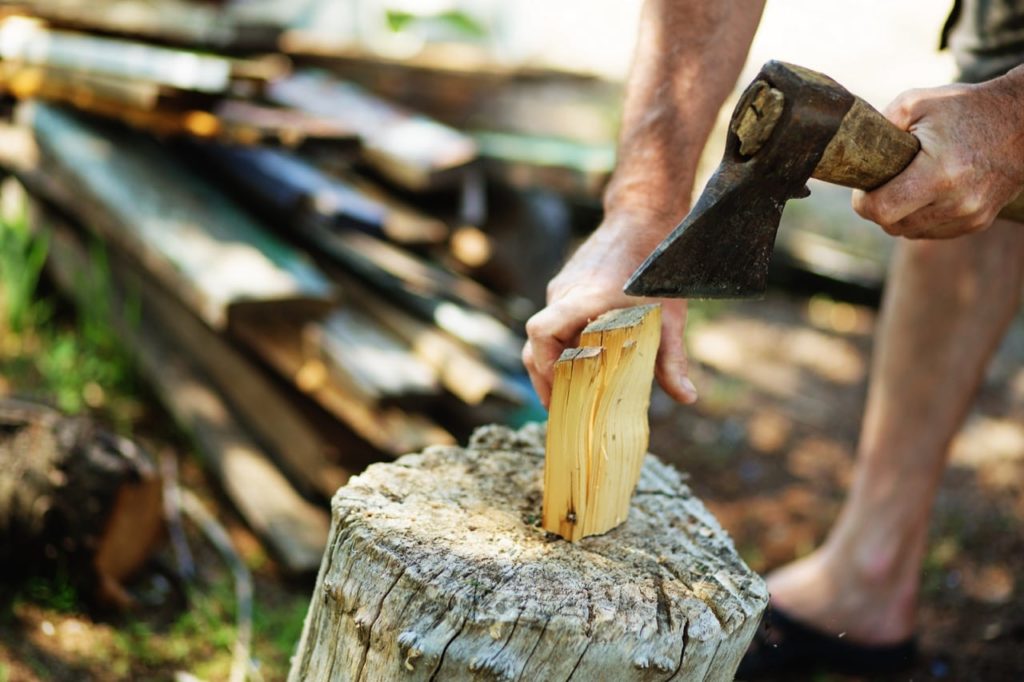You may want to split firewood with a hatchet for a few reasons. Maybe you have a lot of wood to split and don’t have a chainsaw, or maybe you just like the satisfaction of splitting wood by hand. No matter what your reasons are, here are a few tips on how to do it properly.
The most common challenge people have when trying to split firewood with a hatchet is using improper form and technique. This can damage the hatchet, or even injure you. Another challenge can be finding a suitable location to do the splitting.
It can be tough to split firewood with a hatchet. It takes a lot of strength and stamina, and it’s easy to get frustrated. This article will give you some tips on how to do it properly, so that you can avoid damaging the hatchet or injuring yourself.
1. Choose the right hatchet
When it comes to splitting firewood, it’s important to choose the right hatchet. A well-balanced hatchet that fits comfortably in your hand is the best option. The wrong hatchet may be difficult to control and can cause you to damage the wood or injure yourself.
Types of Hatchets
There are different types of hatchets and axes. A hatchet is a type of axe that is well-balanced and fits comfortably in your hand.

There are many different types of hatchets on the market, so it’s important to choose one that is well-balanced and fits comfortably in your hand. You also want to make sure that the hatchet is made of high-quality steel so that it can stand up to the rigors of splitting wood.
These are the most common types of hatchets for splitting firewood:
- Standard Hatchet
- Felling Axe
- Broad Axe
- Carpenter’s Axe
- Throwing Axe
Buying a Hatchet
When choosing a hatchet, it’s important to consider the size, weight, and balance. You also want to make sure that the hatchet is made of high-quality steel. Don’t get overconfident and buy a hatchet that is too big or too heavy for you to handle.
Caring for Your Hatchet
It’s important to take care of your hatchet so that it will last for many years. Store the hatchet in a dry place, and keep the blade clean and sharp. When you’re not using the hatchet, cover the blade with a sheath or cloth.
Keep the hatchet sharp so that it will be easier to use, and so that you can avoid damaging the wood. A dull hatchet can cause the wood to split unevenly, or even break the hatchet. You will also need to exert more force when using a dull hatchet, which can be dangerous especially as you get more tired.
2. Find a suitable location to split the wood
Once you have the right hatchet, it’s time to find a suitable location to do the splitting. You’ll need plenty of space and no obstacles. The most important thing to consider when choosing a location is safety. Make sure there are no power lines overhead, and no cars or people nearby.
If there are children or pets in the area, make sure they are in a safe place where they cannot get hurt. Children can do unexpected things, and pets can be curious.

It’s also important to choose a level surface to split the wood on. A stump or log is ideal. Do not try to split the wood on the ground, as this can be dangerous. Also, if your hatchet hits the ground it will dull the blade.
Make sure the ground you stand on is free of obstacles, so that you don’t trip and fall. Make sure there is a wide enough circle around you, so that you can swing the hatchet without hitting anything. The wood can sometimes bounce back when you hit it, so be aware of your surroundings.
3. Inspect the wood for any rot or other damage
Before you start splitting the wood, it’s important to inspect it for any rot or other damage such as bugs. This step is important because you don’t want to split rotten wood. Rotten wood can be dangerous because it can break or explode when you hit it with the hatchet.
If the wood is too rotten to split, you can use it as kindling. If there are any nails or other metal in the wood, remove them before splitting the wood. They can damage the hatchet or injure you.
4. Cut the wood into manageable pieces
The next step is to cut the wood into manageable pieces. You don’t want to try to split a big log all at once. It’s better to cut it into smaller pieces that you can handle.
Start by chopping the end of the log off, so that it’s flat. Then, use your hatchet to chop the log into smaller pieces. The size of the pieces will depend on the size of the log, your wood burner and the type of wood.
As a rule of thumb, the pieces should be no bigger than the width of your wood burner. If the pieces are too big, they won’t burn well. If the pieces are too small, they will burn up too quickly.
6. Swing the hatchet with proper form and technique
Now it’s time to start splitting the wood. First, make sure you are using proper form and technique. The most important thing is to keep your hands in the correct position.
Grip the hatchet with one hand at the top of the handle, and the other hand lower down. When you swing the hatchet, make sure that your hands don’t move. This will help you to avoid injury.
Next, take a step forward with your dominant foot. This will give you more power when swinging the hatchet. As you swing the hatchet, follow through with your swing. This means that you should continue moving your arms even after the hatchet has hit the wood.

Finally, make sure that you are using the right amount of force. Don’t swing the hatchet too hard, or you could damage the wood or the hatchet. But don’t swing it too softly either, or the hatchet won’t split the wood, and might get stuck into the log.
7. Split the wood along the grain
Once you have the proper form and technique, it’s time to start splitting the wood in the best way possible. The first thing you need to do is find the grain of the wood. The grain is the direction that the fibers in the wood are aligned.
In general, you want to split the wood along the grain. This will make it easier to split the wood, and it will also make the pieces of wood more uniform.
To find the grain, look at the end of the log. The grain will run parallel to the length of the log. Once you have found the grain, position the hatchet so that it is perpendicular to the grain.
Splitting the wood against the grain is more difficult, and it can also be dangerous. The wood is more likely to break or explode when you hit it with the hatchet. It should quickly become obvious to you if you are doing this step correctly or not.
9. Repeat the process as needed until all the wood is split.
Once you have the hang of it, splitting wood is a relatively easy task, and great exercise. You will enjoy the warmth of firewood twice… Just remember to use proper form and technique, and to split the wood along the grain. With a little practice, you’ll be able to split even the biggest logs with ease.
Conclusion
Splitting wood is a relatively easy task, but it’s important to use proper form and technique to avoid injury. The most important thing is to keep your hands in the correct position when swinging the hatchet. You should also grip the hatchet with one hand at the top of the handle, and the other hand lower down. As you swing the hatchet, make sure that your hands don’t move.
When splitting the wood, it’s best to split it along the grain. To find the grain, look at the end of the log. The grain will run parallel to the length of the log. Once you have found the grain, position the hatchet so that it is perpendicular to the grain. Splitting the wood against the grain is more difficult, and can also be dangerous.
With a little practice, you’ll be able to split even the biggest logs with ease. Just remember to use proper form and technique, and to split the wood along the grain.
FAQ
How do I know if I’m using the right amount of force when swinging the hatchet?
If you swing the hatchet too hard, you could damage the wood or the hatchet. But if you swing it too softly, the hatchet won’t split the wood, and might get stuck into the log. The best way to figure out the right amount of force to use is to experiment. Start by swinging the hatchet softly, and then gradually increase the force until you find a sweet spot that works for you.
What should I do if the wood is splitting in an undesirable direction?
If the wood is splitting in an undesirable direction, stop swinging the hatchet and reposition it so that it is perpendicular to the grain. Once you have found the grain, position the hatchet so that it is perpendicular to the grain. Splitting the wood against the grain is more difficult, and can also be dangerous.
Can I use an axe to split wood?
Yes, you can use an axe to split wood. However, it’s important to use the right size axe for the job. If the axe is too big, it could be difficult to control. If the axe is too small, it might not be effective at splitting the wood.
Is it better to split wood with a hatchet or an axe?
It depends on what you’re looking for. A hatchet is smaller and easier to control than an axe. However, an axe is more effective at splitting wood. If you’re looking for a tool that is easy to control, go with a hatchet. If you’re looking for a tool that is more effective at splitting wood, go with an axe.
